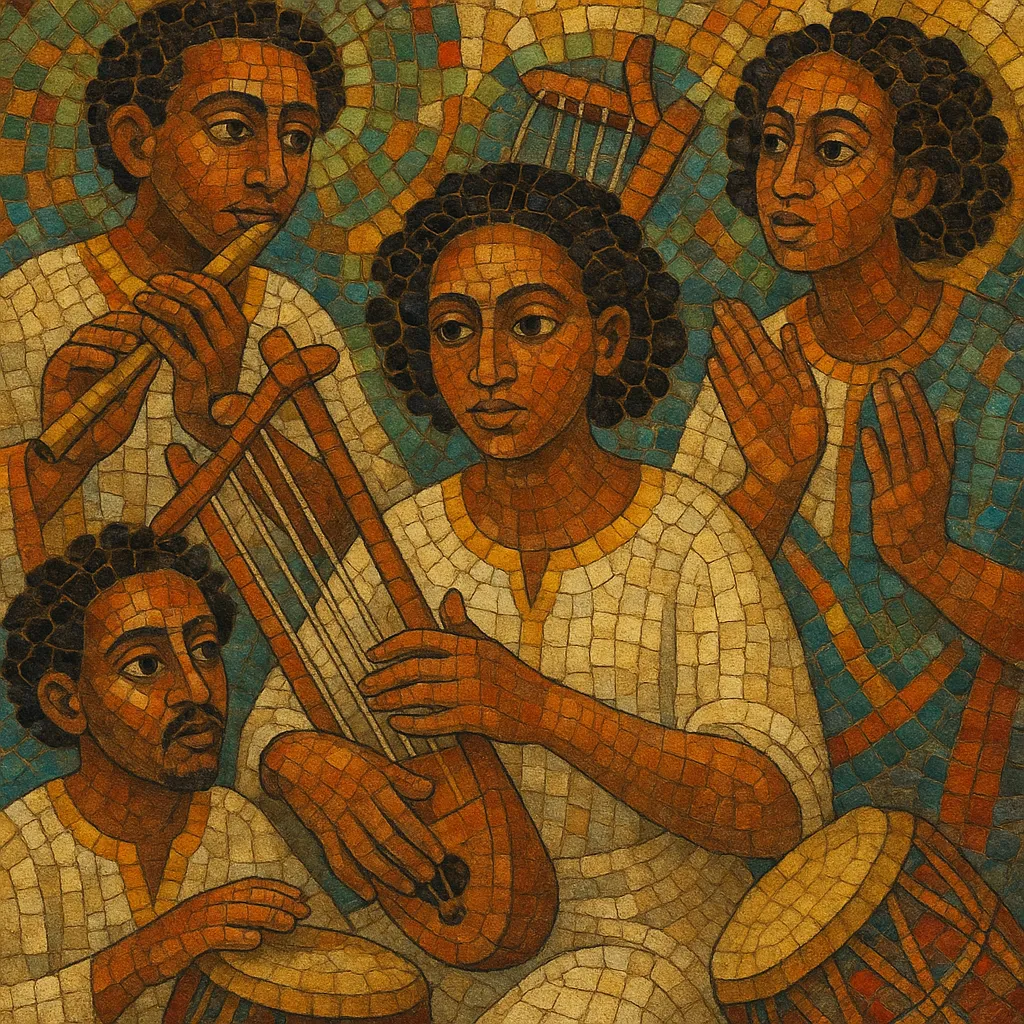Ethiopic music refers to the rich musical traditions of Ethiopia, spanning sacred chant, folk repertoires, and modern urban styles. It is unified by distinctive pentatonic modal frameworks known as qenet (most famously Tizita, Bati, Ambassel, and Anchihoye), flexible rhythms, and expressive vocal ornamentation.
Core timbres come from indigenous instruments such as the krar (lyre), masenqo (one‑string fiddle), begena (large ten‑string lyre), washint (end‑blown flute), and kebero drums, alongside handclaps and ululations. Vocal lines are melismatic, often call‑and‑response, and performed in Amharic, Tigrinya, Oromo and other Ethiopian languages. In the 20th century, horns, electric guitars, and organs joined the palette, setting the stage for the globally celebrated Ethio‑jazz sound.
At its sacred pole, Ethiopic music includes the ancient Zema chant of the Ethiopian Orthodox Tewahedo Church (traditionally attributed to Saint Yared). At its secular pole, azmari bardic traditions, court ensembles, social‑dance repertoires, and later city bands shaped a uniquely Ethiopian modernity.
Tradition holds that Ethiopian Orthodox chant (Zema) was codified by Saint Yared in the 6th century, establishing modes, rhythmic cycles, and liturgical performance practices. Over centuries, church choirs, kebero drummers, and begena players sustained and elaborated these devotional forms. Parallel to the sacred sphere, folk traditions—work songs, wedding music, and regional dance repertoires—flourished with krar, masenqo, and washint.
Imperial and regional courts supported ensembles and ceremonial music, while azmari (itinerant bards) became central transmitters of secular song and satire. In the early 20th century, brass and military bands (notably those formed around the Imperial court) introduced staff notation, polyphonic arranging, and a broader instrumental palette, helping bridge traditional qenet with modern ensemble practice.
Addis Ababa’s nightlife blossomed into a "Swinging Addis" era. Hotel bands, the Imperial Bodyguard Band, and groups like the Walias and Dahlak fused pentatonic qenet and Ethiopian rhythms with horns, organ, and drum set grooves. This nurtured Ethio‑jazz and modern Ethiopian pop, producing landmark recordings later reissued in the Éthiopiques series.
Political upheaval, censorship, and migration reshaped the scene. Many artists recorded abroad or performed for diaspora communities. Cassette culture kept local circulation alive, while sacred and folk traditions persisted in churches and community events.
Reissue programs and international collaborations sparked a worldwide rediscovery. Contemporary Ethiopian and diaspora artists blend qenet with jazz, reggae, hip‑hop, and electronic music, while traditional ensembles, church choirs, and azmari houses continue to sustain the core idioms.


